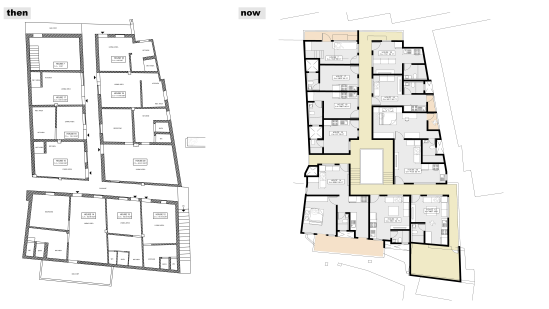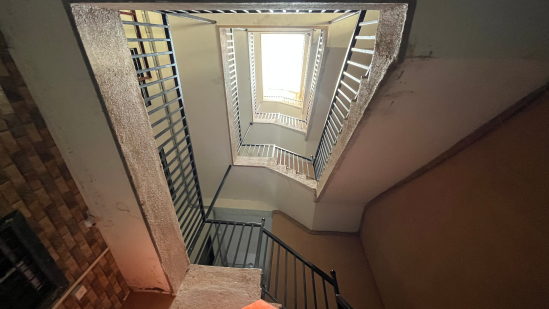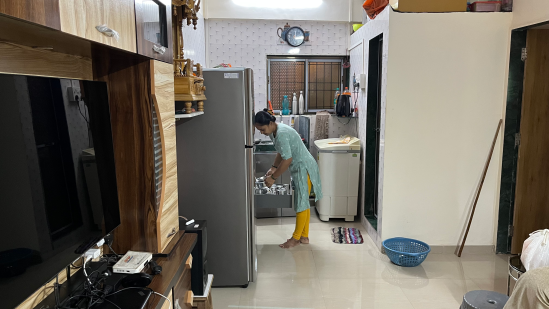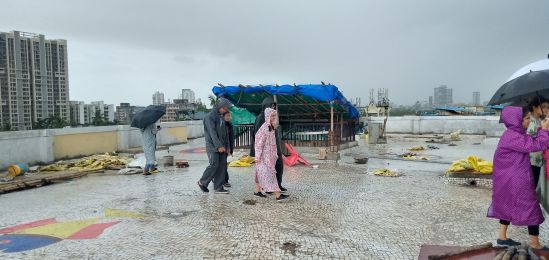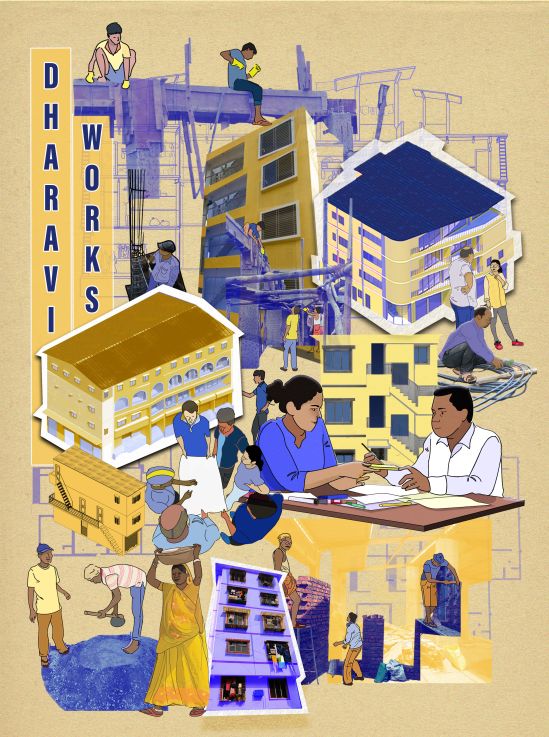Vithal Bhaskar Chawl after Re-development

Vithal Bhaskar Chawl after Re-development
After the residents moved back in, the urbz team returned to the renovated Vithal Bhaskar Chawl in Dharavi Koliwada. The team talked to the locals to learn how they were using the new area and to help the residents express any issues they were having.
Starting on the ground floor, we went to every house. The residents extended a warm welcome to the team. Residents' continued occupancy of the same unit, next to the same neighbours with whom they have formed close bonds over the years, was a pleasant sight. The locals were adamant about staying in the same neighbourhoods they'd lived in for generations, so the new design had to consider that.
First, we visited the home of Mahesh Manoj, who told us he had lived in the chawl since it was first renovated in the early 2000s. He exclaimed that the size of his residence had decreased. However, when we compared the original chawl layout with the updated one, we found that the square footage he was given was the same as before, even though the new design had rectangular or L-shaped rooms instead. Perceptions of space and its various arrangements provided a starting point for the discussion that this example sparked. While describing the building's enclosed design, he commented, "Very nice overall, although we don't always achieve the required network. The connection frequently drops, especially during team videoconferencing."
Further elaborating on the provided area, Manoj said, "The hallway is far too spacious, and our dwellings might have used the extra space if the passageway had been made smaller." Since the architect and builder, both claim that adequate lighting and airflow were critical to residents' comfort, this is an intriguing topic to investigate further.
The original chawl's poor spatial quality resulted from the great density of its buildings, which impeded the availability of necessities like clean air and adequate lighting. Windows could only be constructed on three of the plot's four sides to allow for natural light and ventilation due to a shared wall on one side. The construction of a central light well and staircase improved the chawl's lighting, ventilation, and overall traffic flow. Therefore, the light well's aperture appears larger than it is. The stairs' landings, which also serve as a corridor, provide direct access to some units on the ground and second floors. A chowk (or courtyard) is made on the ground floor to let in natural light. The chowk (or public square) is illuminated to make people feel comfortable and acts as the hub for many daily events.
Due to its organic and incremental development, the traditional chawl initially needed more public space and open air in front of the rooms. The large corridor in the new chawl serves multiple purposes: as a place to hang clothes and spices to dry, as a place to relax in the evening, as a place for children to play, and as an extra room for guests. A rooftop terrace provides extra open space for larger gatherings.
Joseph Koli, the local contractor who built the chawl, emphasized the importance of light and ventilation as he explained: "The verandah was created to guarantee that the chawl gets sufficient lighting and ventilation. In addition to serving as an outside room for entertaining, the verandah can also be used for other purposes."
The separate bathrooms in each room contribute to the impression of less space. Since the new chawl required a separate toilet. Even the 9-square-meter units were required to have a bathroom. Providing toilets in each residence were a significant obstacle. Each house has a bathroom with the same square footage as the previous one. Expressing relief, Mr. Manoj Narwante said, “ I have two daughters. It is great that now we have a separate private bathroom, and they do not have to use the public toilet.”
For many of the residents, the roof is a welcome architectural feature. Before, the chawl in Mumbai was covered in a corrugated steel sheet, which added to the already high heat and humidity of the space below. The new chawl's pakka concrete roof reflects sunlight, keeping the area beneath it cool. " Our room remains pleasantly cool during the day; otherwise, the corrugated roof used to convert our homes into a heating pot",- said Bannama, a 60-year-old tenant living in Dharavi Koliwada for more than 25 years now.
It's inspirational to observe how a design ends up being used in actuality. Insight into the preferences and perceptions of the residents was the purpose of our visit. The lessons from Vithal Bhaskar chawl will be included into the next round of redevelopment by the community in Dharavi Koliwada.









